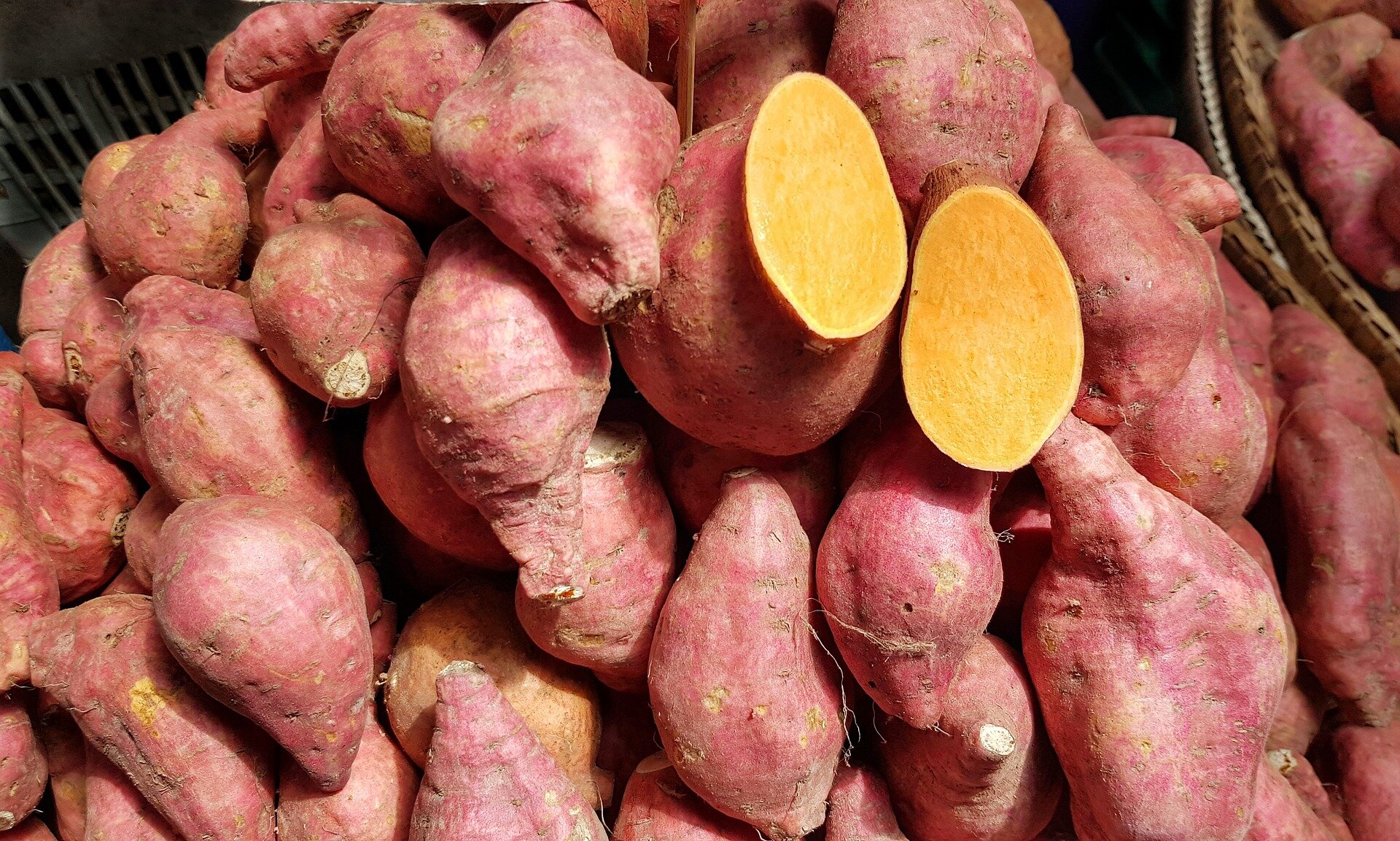A human touch in a plant world
Humans have been playing the puppet master in agriculture for years.
Scientists haven't been meddling in the genetics of plant species just for fun. Instead, these developments are carefully crafted to bring considerable improvements to the crop, from increasing the size to producing food that can save millions of lives.
Wait, is that a banana?
Some of our most loved vegetables would be unrecognizable in their original form.
For years scientists and farmers have harnessed their plant knowledge to guide crop varieties and reach an outcome with higher benefits to consumers. The evidence is staring right at us in the greengrocers.
The humble soft banana used to be packed with large hard seeds, carrots were a mass of spindly white roots, and peaches were the size of cherries and tasted like lentils (Science Alert. 2018). These original varieties can no longer be found. Humankind took it upon itself to selectively breed the desired traits of these crops to produce the foods we now eat every day (FAO. 2020). Slowly but surely, being able to create products that are bigger, tastier, and more resistant.
In more recent years, the need for selective breeding has surpassed the benefits of purely increasing a food's production and popularity; it has been a lifesaver.
Miracle Rice
India was on the verge of famine before miracle rice swept in to rescue millions of lives.
In 1961 a food crisis was looming. In a region where 80% of calories were provided by rice (BBC. 2016), the starting point was clear. The International Rice Research Institute teamed up with Norman Borlaug and began cross-breeding thousands of rice varieties until they landed upon the IR8 variety (BBC. 2016). The IR8 rice increased the yield by 900% compared to the traditional variety (Bastani, A. 2019). This tremendous increase in the output provided food for millions of people who would have otherwise been left to starve, which is what earned it the crown of 'miracle rice', and rightly so.
The momentous success of this selective breeding to produce higher-yielding crops was termed the 'green revolution'. It continued to pick up pace between 1960 and 2000, allowing for significant increases in yield; 208% for wheat, 157% for maize and 78% for potatoes (Pingali, P.L. 2012). Higher yields mean a higher number of people fed, displaying the huge benefit of utilizing our knowledge of a plant's genes to our advantage.
The sweet potatoes fighting micronutrient deficiency
Modification of crops is here to tackle another health crisis, and this time it's vitamin A deficiency.
Vitamin A deficiency is a severe public health problem impacting 48% of children between the ages of six months and five years in sub-Saharan Africa and 44% in South Asia (Unicef. 2019). The consequences of an inadequate intake of vitamin A are devastating. WHO estimates that 250,000 to 500,000 children become blind every year due to vitamin A deficiency; half of them will die within a year of losing their sight (WHO. No date).
So, we need vitamin A distributed to millions. And sweet potatoes might just be the answer.
This method of crop refashioning is done through biofortification. Biofortification improves the nutritional quality through agronomic practices, plant breeding or biotechnology (WHO. 2019). The plant of choice is sweet potatoes, currently grown all over Africa, but the native variety is white, lacking the bright orange colour, and this is its downfall. The orange colour doesn't just give the potatoes a stylish appearance but shows the presence of beta-carotene. Beta-carotene is the key here, as our cells convert it to vitamin A (GLP. 2021).
So biofortification is used to combine the local white sweet potato with the orange sweet potato. We get a potato that can grow well in local conditions and contain the magic beta-carotene. Evidence has shown that the distribution of these potatoes accounted for 78% of vitamin A intake in young children in Mozambique (HarvestPlus. 2012). This significant contribution lays out hope in tackling vitamin A deficiency and saving millions of children every year.
Whether through selective breeding or genetic modification, something as small as tweaking a plant's genome holds the potential for life-changing results. With ever-continuing global hunger and the consequences of climate change becoming progressively more dangerous, utilizing genetics could come to the rescue once again. Cellular agriculture is just one step further in our journey of genetic modification.
References
BBC. 2016. IRS: The miracle rice which saved millions of lives. https://www.bbc.co.uk/news/world-asia-india-38156350
Bastani, A. 2019. Fully automated luxury communism. (Book).
FAO. 2020. Science and history of GMOs and other food modification processes. https://www.fda.gov/food/agricultural-biotechnology/science-and-history-gmos-and-other-food-modification-processes
GLP. 2021. High-yielding sweet potato that fights vitamin A deficiency could be Ghana’s first gene-edited crop. https://geneticliteracyproject.org/2021/02/18/ghana-scientist-turns-to-gene-editing-to-improve-sweet-potato-crop/
HarvestPlus. 2012. HarvestPlus brief: reaching end users orange-fleshed sweet potatoes project. https://issuu.com/harvestplus/docs/harvestplus_ofsp_brief_2010
Pingali, P.L. 2012. Green revolution: impacts, limits and the path ahead. PNAS, 109(31). https://doi.org/10.1073/pnas.0912953109
Science Alert. 2018. Here’s what fruits and vegetables looked life before we domesticated them. https://www.sciencealert.com/fruits-vegetables-before-domestication-photos-genetically-modified-food-natural
Unicef. 2019. Vitamin A deficiency. https://data.unicef.org/topic/nutrition/vitamin-a-deficiency/
WHO. 2019. Biofortification of staple crops. https://www.who.int/elena/titles/biofortification/en/
WHO. No date. Vitamin A deficiency. https://www.who.int/data/nutrition/nlis/info/vitamin-a-deficiency



